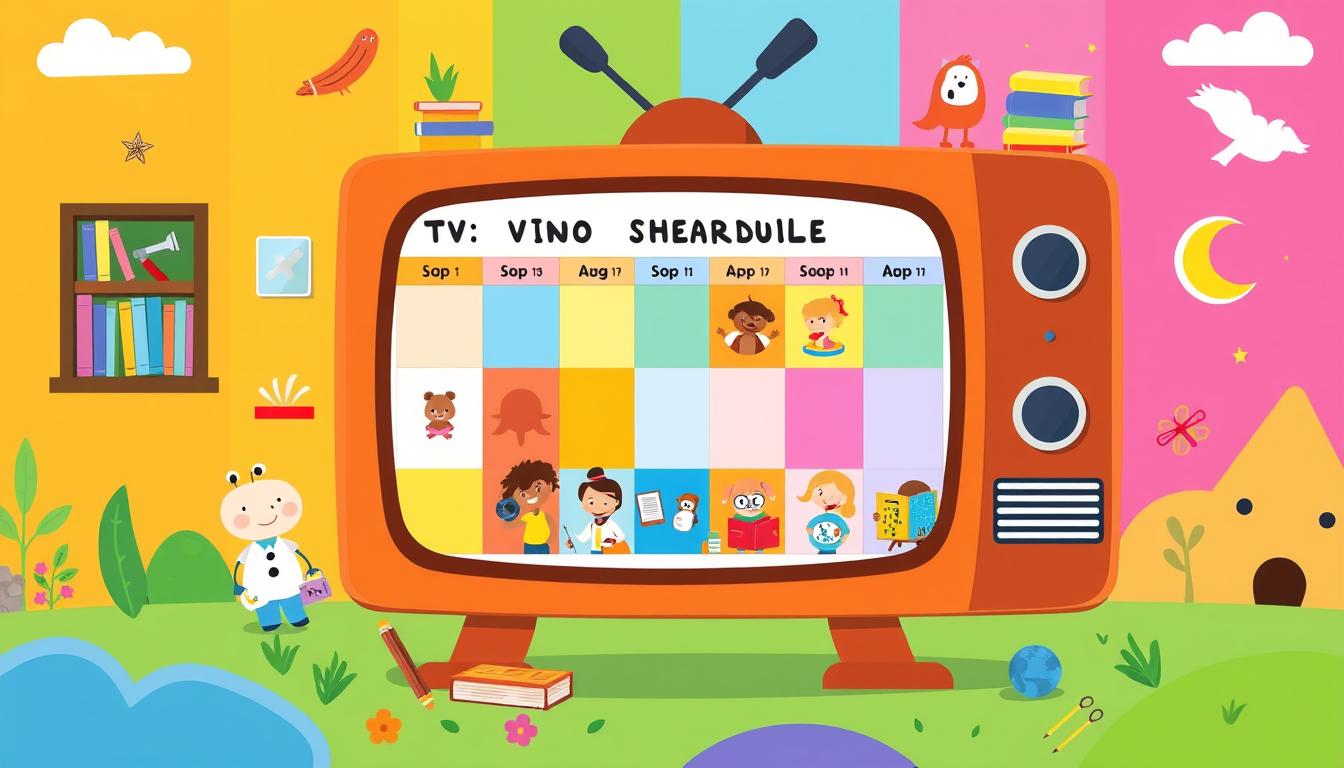As parents, we aim to give our kids a balanced education that fits their learning ways. Homeschooling is growing in popularity in Australia. It lets families tailor learning to each child’s needs. This guide helps you find the best homeschool curriculum for your child’s education.

Key Takeaways
- Discover a range of high-quality homeschool curriculum options tailored to different learning styles
- Understand the legal requirements and registration process for homeschooling in Australia
- Learn about educational standards, compliance, and assessment guidelines to ensure your child’s academic success
- Explore a variety of supplementary materials and assessment tools to complement your homeschool program
- Gain insights from experienced homeschooling families and access Australian-based resources
Understanding the Fundamentals of Homeschooling in Australia
Homeschooling in Australia lets parents play a big role in their kids’ learning. It’s important to know the laws and rules set by education authorities. This section will cover the key points of homeschooling in the country.
Legal Requirements and Registration Process
In Australia, homeschooling is allowed, and parents can teach their kids at home. The steps to register vary by state or territory. Parents usually need to tell the education authority they plan to homeschool. They must share details about the homeschool materials and curriculum, and show they can teach an accredited homeschool curriculum.
Educational Standards and Compliance
Homeschooling families in Australia must meet certain standards and rules. They need to make sure their curriculum includes important subjects like English, math, science, and humanities. It must also match the Australian Curriculum. Parents must keep up with their kids’ learning progress and be ready to show they follow the rules when asked.
Assessment and Reporting Guidelines
Homeschooling families in Australia also have to follow rules for checking and reporting on learning. This might mean sending in regular reports, doing tests, or other ways to show how well the homeschooling is working. The exact rules can differ by state or territory, so parents need to know what’s required in their area.
By knowing the laws, standards, and rules for checking progress, Australian homeschooling families can give their kids a well-rounded and legal education.
Best Homeschool Curriculum Options for Different Learning Styles
Finding the right homeschool curriculum can seem overwhelming. But, it’s a journey worth taking. It’s crucial to match the curriculum with your child’s learning style. Australia offers a wide range of homeschooling options, from self-paced to flexible learning.
Visual learners might enjoy the Australian Christian Home Schooling program. It uses multimedia and interactive lessons to make learning fun. Kinesthetic learners, on the other hand, might prefer the Accelerate Christian Home Schooling program. It focuses on hands-on activities and projects.
Complete Education Australia offers a flexible homeschooling option. It’s self-paced and customizable, letting students learn at their own speed. This approach helps students feel more in control of their education.
| Curriculum | Learning Style | Key Features |
|---|---|---|
| Australian Christian Home Schooling | Visual Learners | Multimedia-rich materials, engaging visuals, hands-on activities |
| Accelerate Christian Home Schooling | Kinesthetic Learners | Project-based approach, active learning opportunities |
| Complete Education Australia | Flexible Learners | Self-paced curriculum, customizable learning paths |
By looking into these different curricula, Australian homeschooling families can find the perfect fit. This ensures their children enjoy learning and have a rewarding educational journey.
Essential Components of a Strong Homeschool Program
Creating a good homeschool program is more than just picking the right homeschool materials and homeschool resources. It’s about planning carefully to meet your child’s educational needs. It also means giving them the support and flexibility they need for parent-led instruction. Let’s look at the key parts that make up a strong homeschool curriculum.
Core Subject Requirements
Keeping your child’s education on track is crucial when homeschooling. The main subjects that should be at the heart of your homeschool program are:
- Language Arts (reading, writing, grammar, and literature)
- Mathematics (arithmetic, algebra, geometry, and problem-solving)
- Science (biology, physics, chemistry, and earth science)
- History and Social Studies (world history, geography, and civics)
Supplementary Materials
While core subjects are the mainstay of your homeschool program, adding extra materials can make learning more engaging. Think about including:
- Educational documentaries and videos
- Interactive online resources and educational apps
- Hands-on learning activities and experiments
- Field trips and community-based learning opportunities
Assessment Tools and Methods
It’s important to check how your child is doing regularly. Use a mix of the following tools and methods to assess their progress:
| Assessment Tool | Purpose |
|---|---|
| Standardized Tests | Measure academic achievement and compare to national standards |
| Portfolio Assessments | Showcase student work and personal growth over time |
| Observation-based Assessments | Evaluate skill development and mastery through daily interactions |
By including these key elements, you can build a homeschool program that not only meets your child’s educational needs. It also helps them develop a love for learning and sets them up for success in the future.
Popular Australian-Based Homeschool Resources
In Australia, homeschooling families have many local resources and curriculum options. There are accredited homeschool curriculum and engaging online platforms. These tools are of high quality and diverse.
The Australian Homeschool Curriculum is a top choice for many. It meets Australian Curriculum standards and includes subjects like English, Maths, Science, and Humanities. It’s flexible, fitting different learning styles and approaches.
My Homeschool is another favorite for Australian homeschoolers. It offers lesson plans, educational resources, and a community. It has accredited curriculum and guides to help families on their homeschooling path.
There are also many other Australian-made educational materials and resources. These include local publishers, subject-specific workbooks, and online tools. They meet the unique needs of the Australian education system.
| Resource | Description | Key Features |
|---|---|---|
| Australian Homeschool Curriculum | Comprehensive homeschool curriculum aligned with Australian educational standards | Covers core subjects Flexible and adaptable Designed for various learning styles |
| My Homeschool | Online platform offering lesson plans, resources, and a supportive community | Curated selection of accredited homeschool curriculum Helpful guides and tutorials Active homeschooling community |
Exploring these Australian homeschool resources helps families find the best fit. They can create a homeschooling experience that supports their children’s growth and development.
Customising Your Homeschool Curriculum for Different Age Groups
Creating a homeschool curriculum that meets your children’s unique needs is key to their success. Whether you’re looking at preschool homeschool curriculum or plans for older students, this guide will help you tailor your approach for each age group.
Early Years (Ages 5-8)
In the early years, focus on building a strong base in reading, writing, and math. Use hands-on activities, interactive lessons, and educational games to keep learning fun. Encourage exploration and discovery with themed unit studies that mix science, social studies, and arts.
Middle Years (Ages 9-12)
For the middle years, the curriculum can become more structured and independent. Introduce more complex ideas in core subjects and offer personalized learning. Teach critical thinking, problem-solving, and research skills through projects and various educational resources.
Secondary Education (Ages 13-18)
High school years need a detailed and focused curriculum to prepare for college or the workforce. Provide a variety of electives and advanced courses to match your child’s interests and goals. Focus on developing analytical, communication, and time management skills for future success.
It’s vital to regularly check and adjust your homeschool curriculum to meet your children’s evolving needs and interests. By customizing your approach, you can maximize your homeschool journey and instill a lifelong love of learning.
TO WATCH VIDEO CLICK HERE
Technology Integration in Modern Homeschooling
In today’s world, technology has changed homeschooling for families in Australia. It offers homeschool program options and self-paced education tools. These tools are key to modern homeschooling.
Technology gives families access to many digital resources. They can use educational apps, interactive platforms, and virtual classrooms. These tools help students learn in ways that feel right to them, making learning fun and meaningful.
Also, technology lets students learn at their own speed. They can go back to topics they need more practice on. This is great for families with different schedules or learning needs.
“Technology has transformed the way we approach homeschooling, providing us with tools that enhance our children’s educational journey and give them the freedom to explore their interests at their own pace.”
As homeschooling grows, technology will play an even bigger role. By using these tools, Australian families can open up a world of learning. They can make learning personal and exciting for their kids.
Creating a Flexible Homeschooling Approach
Homeschooling families know the value of balance. They find a way to mix structure and flexibility. This lets them create learning plans that fit their child’s needs and how they learn best. It’s a way to change your teaching and schedule as your family’s life changes.
Scheduling Strategies
Good scheduling is key in homeschooling. Try out different schedules to see what works for your family. Add breaks, outdoor time, and let your child lead some learning. A flexible schedule helps you handle surprises or new learning chances.
Balancing Structure and Flexibility
Structure gives stability and routine, but flexibility lets you meet your child’s changing interests and needs. Start with core subjects, but also make room for exploring and personal projects. Be ready to change your flexible homeschooling approach as your family evolves.
Adapting to Individual Needs
Every child is different, and a customized learning plan is key to their success. Watch how your child learns, what they’re interested in, and their strengths. Then, adjust your teaching and curriculum to keep them engaged and motivated.
“The beauty of homeschooling lies in its ability to adapt to the individual needs of each child, fostering a love of learning and a sense of personal fulfillment.”
Cost Comparison of Different Homeschool Programs
Homeschooling costs are a big deal for many families. The prices of homeschool programs and materials can change a lot. It’s key to know these differences to plan your budget well.
Homeschooling lets parents pick from many programs. Each has its own price. Some popular ones include:
- Complete homeschool curriculum packages: These all-in-one solutions can cost between $500 and $1,500 or more each year. This depends on the grade and how customized it is.
- Individual subject materials: Buying textbooks, workbooks, and other resources can cost between $50 and $300 for each subject each year.
- Online learning platforms: Many online homeschool resources and virtual classes are available. They cost between $50 and $500 each year. This depends on what you get and how much access you have.
Families also need to think about extra materials like art supplies and science kits. These can cost from a few hundred to several thousand dollars each year. It depends on what you want and your child’s needs.
| Homeschool Program Option | Approximate Annual Cost |
|---|---|
| Complete Curriculum Packages | $500 – $1,500+ |
| Individual Subject Materials | $50 – $300 per subject |
| Online Learning Platforms | $50 – $500 |
| Supplementary Materials | $100 – $2,000+ |
The costs can change based on the homeschool program, the child’s age and grade, and what you want to achieve. Knowing the cost range helps families plan and budget for homeschooling.
Homeschooling costs in Australia vary a lot. By looking at different programs and materials, families can find a good mix of quality and cost. This way, they can give their kids a great homeschooling experience.
Incorporating Extra-Curricular Activities and Socialisation
Homeschooling gives Australian students a chance to get a well-rounded education. It lets families add extra activities and focus on socialising. This way, kids learn important life skills and connect with their community.
Community Programs
Homeschool families can find many community programs for their kids. These might be sports clubs, art classes, music lessons, or science workshops. They help kids find their passions and learn new things. Plus, they get to meet others and make friends.
Social Development Opportunities
- Joining homeschool support groups and co-ops
- Attending field trips and excursions with other homeschooling families
- Participating in local community events and volunteer opportunities
- Engaging in online forums and virtual social activities
These homeschool resources help kids make friends, learn social skills, and see the world. They keep the flexible homeschooling approach alive.
Sports and Arts Integration
| Activity | Benefits |
|---|---|
| Sports | Develop physical fitness, teamwork, and leadership skills |
| Arts (Music, Visual Arts, Drama) | Nurture creativity, self-expression, and cultural appreciation |
Adding sports and arts to homeschooling makes education more interesting. It meets different learning needs and styles. This way, education is balanced and flexible homeschooling approach is maintained.
“Homeschooling allows us to tailor our children’s education to their unique needs and interests. Incorporating extra-curricular activities has been a game-changer, ensuring they develop a love for learning and a sense of community.”
– Sarah, Experienced Homeschooling Parent
Success Stories and Practical Tips from Experienced Homeschooling Families
Starting your homeschooling journey can be exciting. Hearing from families who have done it before can be very inspiring. In Australia, many parents have found great benefits in teaching their kids at home.
Kate, a mother of three, talks about her homeschooling experience. “It has changed our family for the better. We’ve made learning fit our kids’ unique ways, making them love learning more than just school.” Her eldest, now in university, says homeschooling helped her a lot.
Liam and Olivia have also seen the benefits of homeschooling. “Our son loves science, so we dive into it with experiments and real-life examples,” says Olivia. “Our daughter’s art has grown because she can try different things without limits.”
FAQ
What are the legal requirements for homeschooling in Australia?
Homeschooling laws differ across Australia. You usually need to register with your local education authority. You must also follow an approved curriculum and provide regular updates on your child’s progress.
How do I choose the best homeschool curriculum for my child?
Pick a homeschool curriculum that fits your child’s learning style and goals. Look for programs that meet Australian standards. Options like Australian Christian Home Schooling and Complete Education Australia offer tailored learning paths.
What are the core subjects and essential components of a strong homeschool program?
A good homeschool program covers English, maths, science, and history. It also includes literature, arts, and life skills. Using effective assessment tools is key to tracking your child’s progress.
How can I create a flexible and adaptable homeschooling approach?
A flexible homeschooling approach requires smart scheduling. It’s about finding the right balance between structure and flexibility. This way, you can tailor your child’s education to their unique needs.
How can I ensure my homeschooled child has opportunities for socialisation and extra-curricular activities?
Include community programs and social activities in your child’s education. Adding sports and arts can enrich their learning experience. Joining with other homeschooling families can also be helpful.
Where can I find practical tips and success stories from experienced homeschooling families in Australia?
Look for local homeschooling communities online and in-person. They offer practical advice and inspiring stories. Their experiences can guide you on your homeschooling journey.
TO SEE MORE TOPICS CLICK HERE



